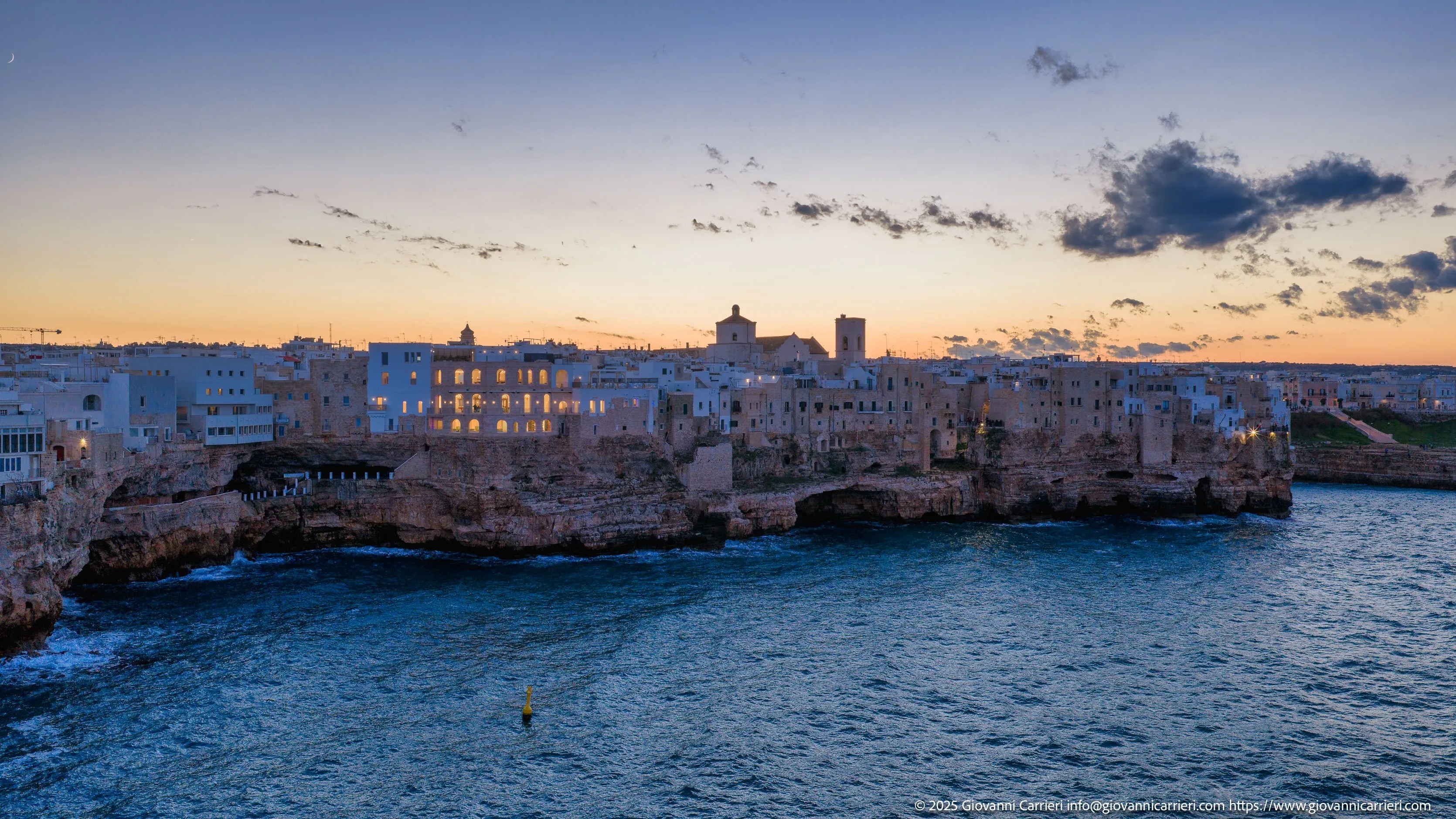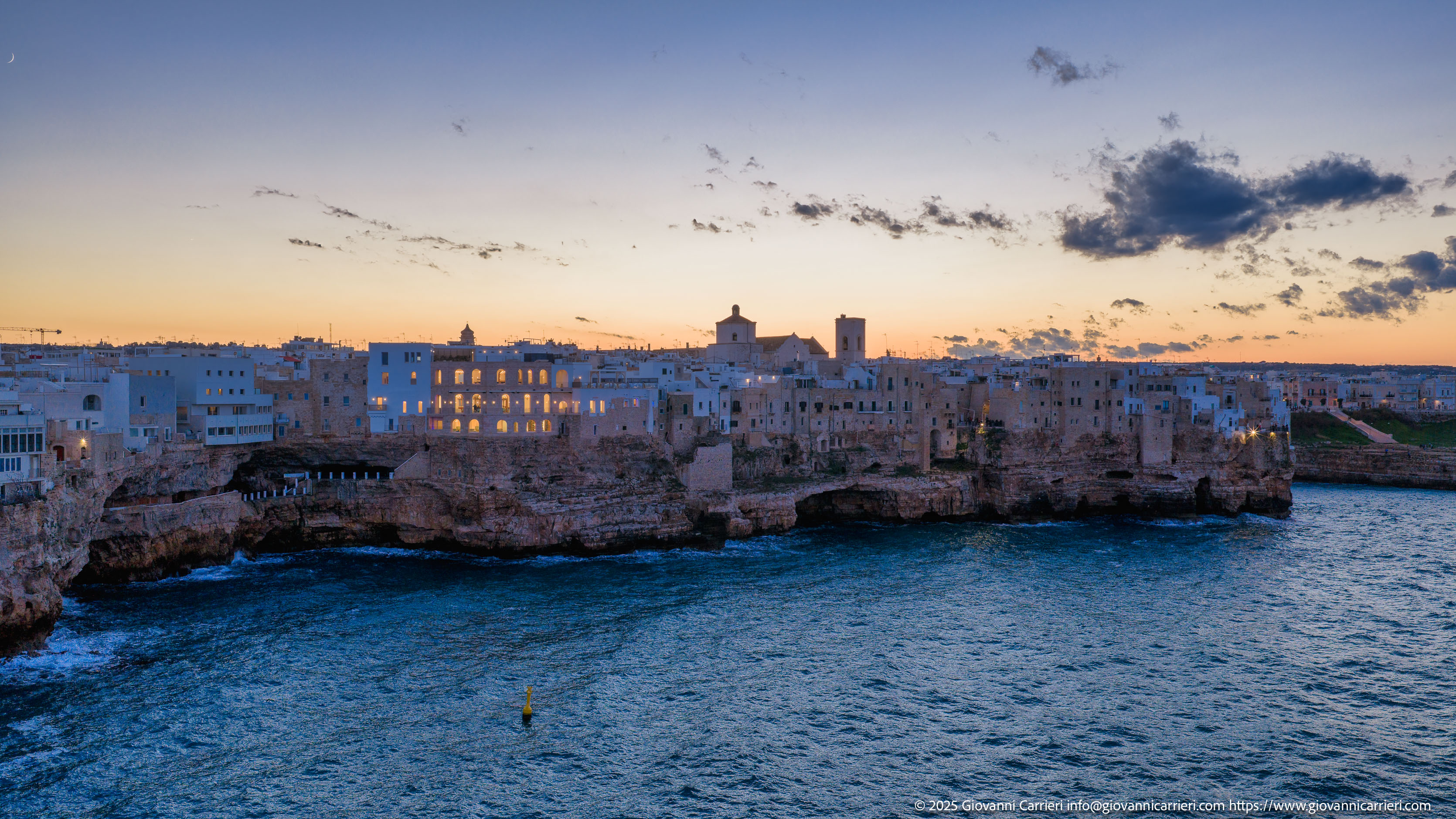Aerial view of the historical center of Polignano a Mare, Puglia, Italy, during blue hour
This view documents the historical center of Polignano a Mare, a settlement whose origin dates back, according to some evidence, to the Neolithic age, but whose foundation is traditionally attributed to the Greek Dionysius II of Syracuse in the 4th century B.C., who established it as Neapolis. The town is built upon a high, jagged limestone cliff that drops sharply into the Adriatic Sea, a strategic location that guaranteed its importance as a maritime stopover along the coast, a role it maintained during the Roman era, as attested by the nearby Via Traiana. The architecture that shapes the village is typical of Apulia, characterized by a compact succession of white lime buildings developed directly on the edge of the rock, utilizing the natural cavities of the sea cliff. The captured moment corresponds to the late twilight, or blue hour, when the sky's natural luminosity takes on cold, saturated tones. The windows and arches of the residential area emit a warm artificial light that establishes a sharp chromatic contrast with the deep blue of the sky and the seawater, emphasizing the historical urban profile and its profound integration with the surrounding coastal environment.

